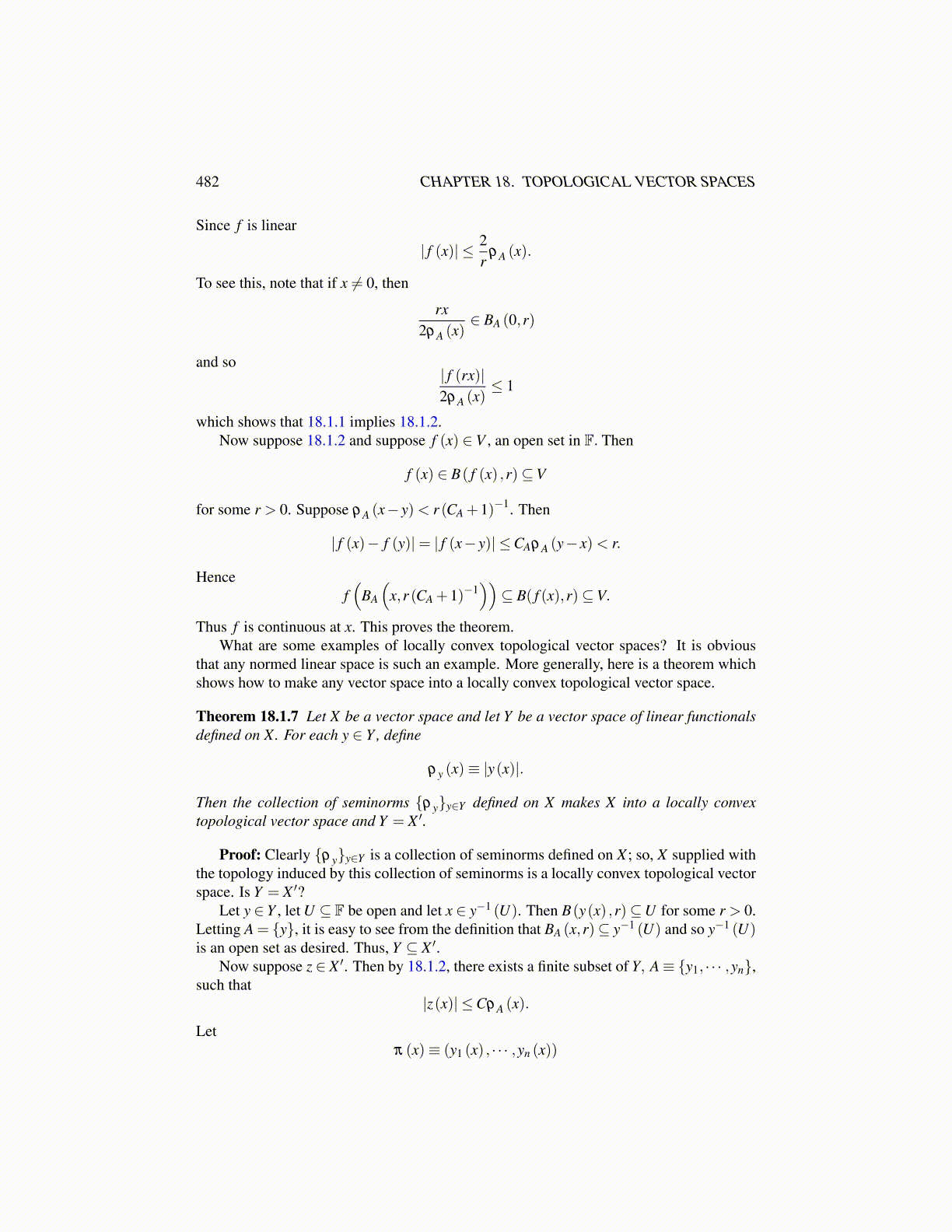
482 CHAPTER 18. TOPOLOGICAL VECTOR SPACES
Since f is linear
| f (x)| ≤ 2r
ρA (x).
To see this, note that if x ̸= 0, then
rx2ρA (x)
∈ BA (0,r)
and so| f (rx)|2ρA (x)
≤ 1
which shows that 18.1.1 implies 18.1.2.Now suppose 18.1.2 and suppose f (x) ∈ V , an open set in F. Then
f (x) ∈ B( f (x) ,r)⊆V
for some r > 0. Suppose ρA (x− y)< r (CA +1)−1. Then
| f (x)− f (y)|= | f (x− y)| ≤CAρA (y− x)< r.
Hencef(
BA
(x,r (CA +1)−1
))⊆ B( f (x),r)⊆V.
Thus f is continuous at x. This proves the theorem.What are some examples of locally convex topological vector spaces? It is obvious
that any normed linear space is such an example. More generally, here is a theorem whichshows how to make any vector space into a locally convex topological vector space.
Theorem 18.1.7 Let X be a vector space and let Y be a vector space of linear functionalsdefined on X. For each y ∈ Y , define
ρy (x)≡ |y(x)|.
Then the collection of seminorms {ρy}y∈Y defined on X makes X into a locally convextopological vector space and Y = X ′.
Proof: Clearly {ρy}y∈Y is a collection of seminorms defined on X ; so, X supplied withthe topology induced by this collection of seminorms is a locally convex topological vectorspace. Is Y = X ′?
Let y ∈Y , let U ⊆ F be open and let x ∈ y−1 (U). Then B(y(x) ,r)⊆U for some r > 0.Letting A = {y}, it is easy to see from the definition that BA (x,r)⊆ y−1 (U) and so y−1 (U)is an open set as desired. Thus, Y ⊆ X ′.
Now suppose z ∈ X ′. Then by 18.1.2, there exists a finite subset of Y, A≡ {y1, · · · ,yn},such that
|z(x)| ≤CρA (x).
Letπ (x)≡ (y1 (x) , · · · ,yn (x))